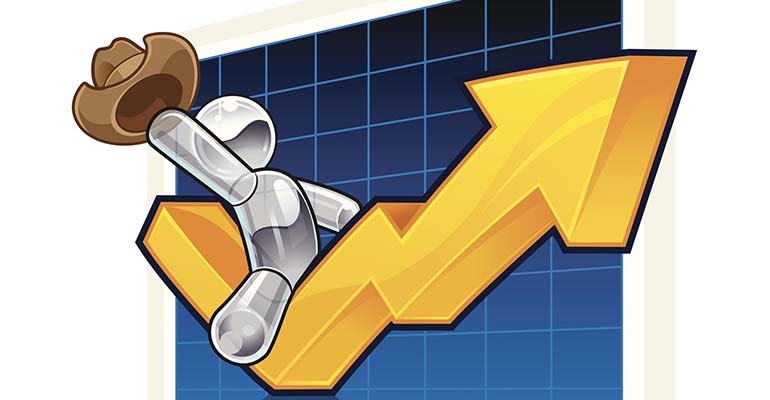November 19, 2021

This week there was an abundance of female sales. Many stockyards that had one recently typically don’t start with female specials until December, but they added a November sale this year. The female sales give us a good look into what the cow/calf sector is feeling about the state of the industry.
At the end of this summer one of Nebraska’s livestock groups held some town hall meetings and the title of those meetings was to the effect of how the packer was causing the cow calf operator to lose out. The cow calf sector typically doesn’t have anything to do with the packer. They produce stockers, feeders, culls, and breeding stock.
And with the price of stockers and feeders right now, and some ages of breeding stock, the cow calf operator doesn’t seem to be losing out on anything right now. And the prices paid for breeding stock reflected they feel pretty good about being in the reproduction segment of the industry.
Before I get into what the female sales told us, I want to cover some basics of marketing as a reminder.
First, everything we own should always be for sale. Second, we should hate our cows and love our grass. This makes sure we don’t destroy the base of running a ranch and that the cows are always for sale.
Digging into those female sales
First-calf heifers are the climax of the bell curve. But there are some market signals that put some at the top and others don’t come close. First, she has to be big. There is very little buying interest in a heifer, either bred or pair, that isn’t weighing over 1,050-pounds. If she is bred, she must calve before the cows do and the market signal there is people want the cows to calve in March.
Bred heifers that are bred to calve March or later were discounted. Heifer buyers are clearly figuring in some extra time for her to breed back to be in synch with the cow herd. The bred heifer will also catch a premium if she is safe AI. When we look at the prices buyers were willing to give to own heifers this week, it is clear that not many understand or factor in the intrinsic value of breeding stock and operating under the false paradigm of the 10-year calculator.
Many people operate under this paradigm of a heifer having 10 years to pay for herself and it is deeply engrained in the industry, so people may be confused why I just called it a false paradigm. I stated that they don’t understand intrinsic value, if they did, they would realize they were buying the most over-valued female in the spectrum. This means she will lose value, there is nothing we can do to increase her value in the market. This loss in value has to be recaptured somewhere, how are they planning on doing that?
Here’s another cue. If she has 10 years to pay for herself and she doesn’t accomplish that until she is six or seven years old, we have very few years she’s actually making us any money. If we cull around the age of 10 this proves the statistic that cow/calf operations only make money 3/10 years. This is not a good business model. In school this would’ve been a failing grade.
The market sent two other signals with the bred heifers and heifer pairs. There is appreciation value to be captured in developing, breeding, and calving them. If, and it's only if, you have the large framed, fleshy, AI-bred, early calvers can an operation that uses harvested feed and machinery to feed those females capture any appreciation value.
Who has the advantage?
It has been a reoccurring theme on here about least-cost producers having the advantage. It’s really a no-brainer because math gives them the biggest difference. Thing is the market seems to be factoring some of the carrying costs into the value of young breeding stock. The guys that run the heifers out and make them earn a living, instead of working from them, are finding themselves at a great advantage in the market. To put it a different way, the market isn’t paying the producer enough for young breeding stock to support his iron hobby.
The next hot ticket in the female market was the 5-year-old bred cow or pair. And if they were big, weighing over 1,450 pounds, and in good flesh they caught a premium. Here is where I write things about the market trying to help us, and here it is. The market is trying to help some of us get rid of our problem cows. More times over these huge cows wean off the small calves. They are inefficient. It requires a lot of feed for them to reach their maintenance requirements, so it takes additional feed for them to put that into raising their calf.
Kit Pharo has preached for decades about running smaller framed cows that fit your environment. If we did this, they would consume less feed for maintenance and be able to put more into raising their calf. Since they consume less feed we can then run more animals on the same acres. Ranching For Profit teaches one of the ways to increase profit is to reduce overhead. By running more animals on the same acres we did that. We are also doing a much better job marketing our grass, since it's now going into production and not maintenance.
Now marry those two ideas with the idea of sell/buy marketing. Sell the huge March-calving cows, and replace them with smaller framed cows due in May. This covers another way Ranching For Profit teaches to increase profit, turnover. The “late” calving cows are discounted because they do not fit the mainstream calving window. Even after adjusting for intrinsic value there is a huge margin between the two females. Plus we now get to calve in warmer weather with longer days
The Cow/calf operator's paradigm is they make the bulk of their money by selling off the calf crop. After examining the relationships between classes of breeding stock this week and the money that could be generated in these trades, it is clear the bulk of the money is in trading breeding stock!
A market report
To wrap this up here’s a quick look at the feeder markets. The value of gain has a slight bell curve in it. Fly-weight cattle are in high demand. This demand casts a shadow on the 5-6 weigh cattle, so the VOG drops a little there. The VOG picks up again in a big way around 700 pounds and remains well above COG. It is clearly a weight gain business right now
Feeder bulls were 20 back, unweaned calves were 6-17 back. Even with the much needed boost in fats, feeder steers remain over-valued, while most weights and classes of feeder heifers are under-valued to fats.
About the Author(s)
You May Also Like






